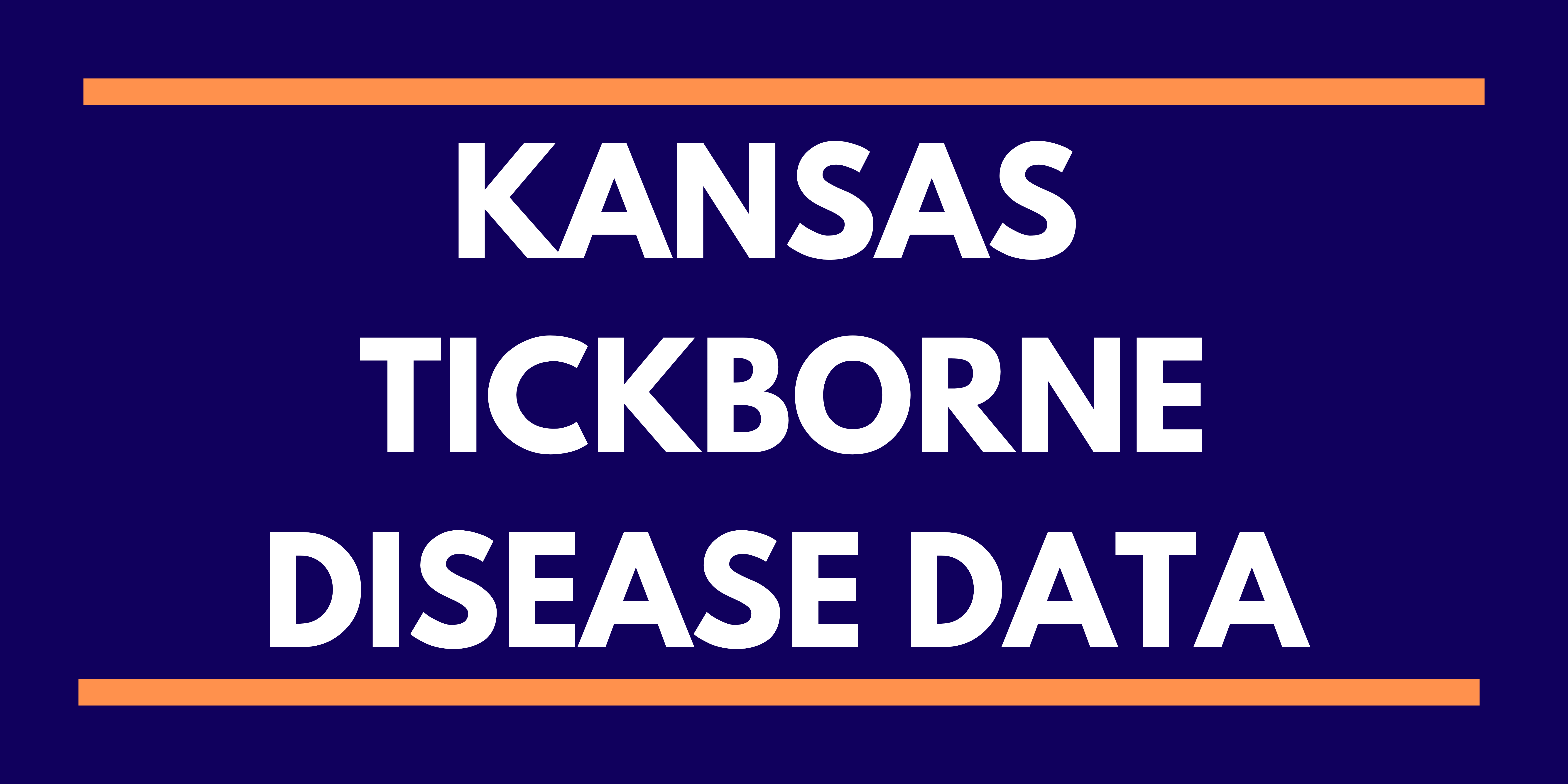Explore Tickborne Disease Data
Explore tickborne disease data by clicking on the icon below:

Nationally Notifiable Diseases
Did you know that certain tickborne diseases are considered to be Nationally Notifiable Diseases in Kansas? A list of arboviral and tickborne diseases that are required to be reported to the Kansas Department of Health and Environment is found in K.A.R. 28-1-2 Reporting requirements for infectious or contagious diseases and conditions. KDHE collaborates with the Centers for Disease Control and Prevention (CDC) for disease surveillance through the National Notifiable Diseases Surveillance System (NNDSS) to share certain tickborne disease data to support surveillance efforts across the nation.
What is a Tickborne Disease?
A tickborne disease is a disease caused by ticks that are infected with bacteria, viruses, or parasites which are transmitted through the bite of an infected tick. Not all ticks carry pathogens that cause disease but some tickborne diseases can cause varying degrees of illness. Avoiding tick bites is the best prevention. Tick attachment for longer than 1 to 2 days increases the potential for the infection to occur. Early tick bite infection detection, accurate diagnosis, and treatment may reduce the morbidity and possible mortality associated with some tickborne diseases. Some examples of tickborne diseases in Kansas are; Anaplasmosis, Chagas Disease, Ehrlichiosis, Lyme Disease, Spotted Fever Rickettsiosis, and Tularemia.
Why Track Tickborne Disease Data?
Tickborne disease data is used to conduct surveillance, perform data analyses, and track trends over time to provide better information for better health. The more we can learn from the data, the more data driven decisions can be made to reduce environmental exposures. Environmental factors such as temperature and humidity impact tick habitat, development, and activity levels. There are numerous associations between micro-climate conditions and the mass reproduction of ticks and therefore the subsequent infestations of host animals. Surveillance shows how tick species expansion may be occurring and what additional factors contribute to the spread of tickborne diseases.
Tickborne Disease Resources